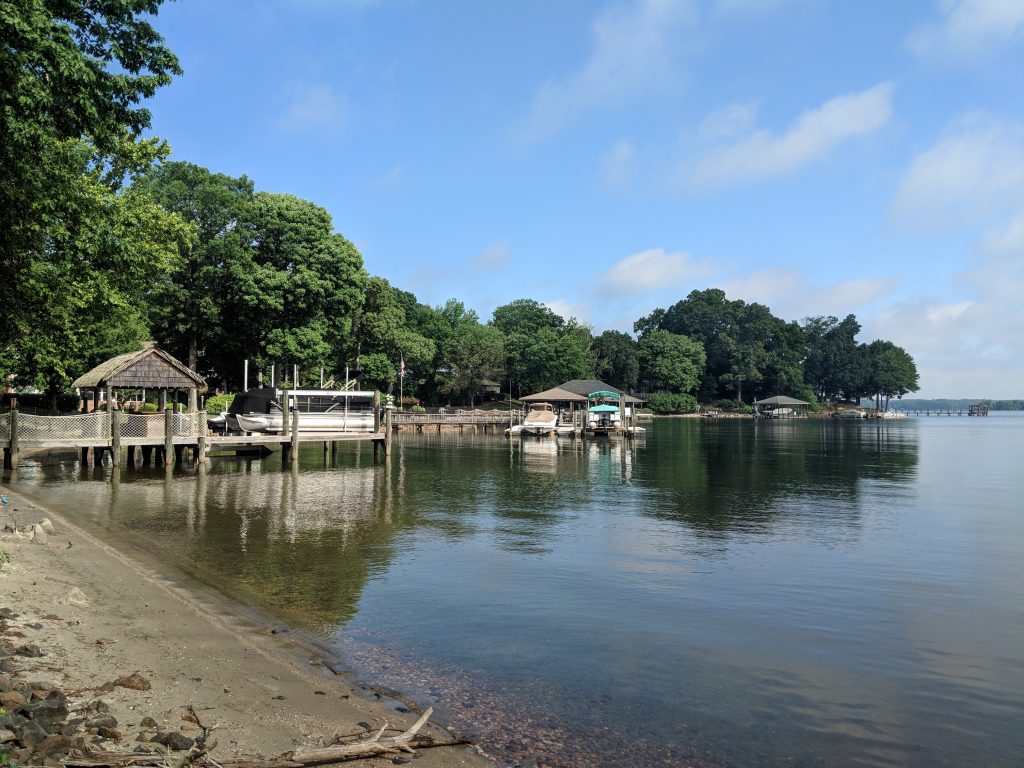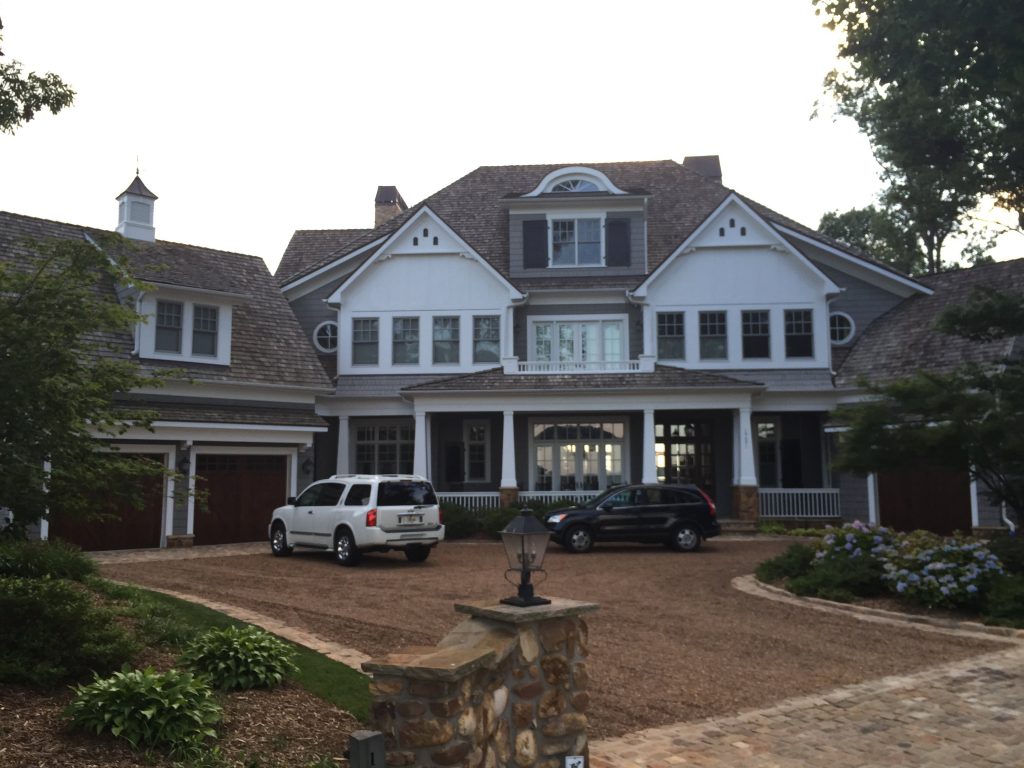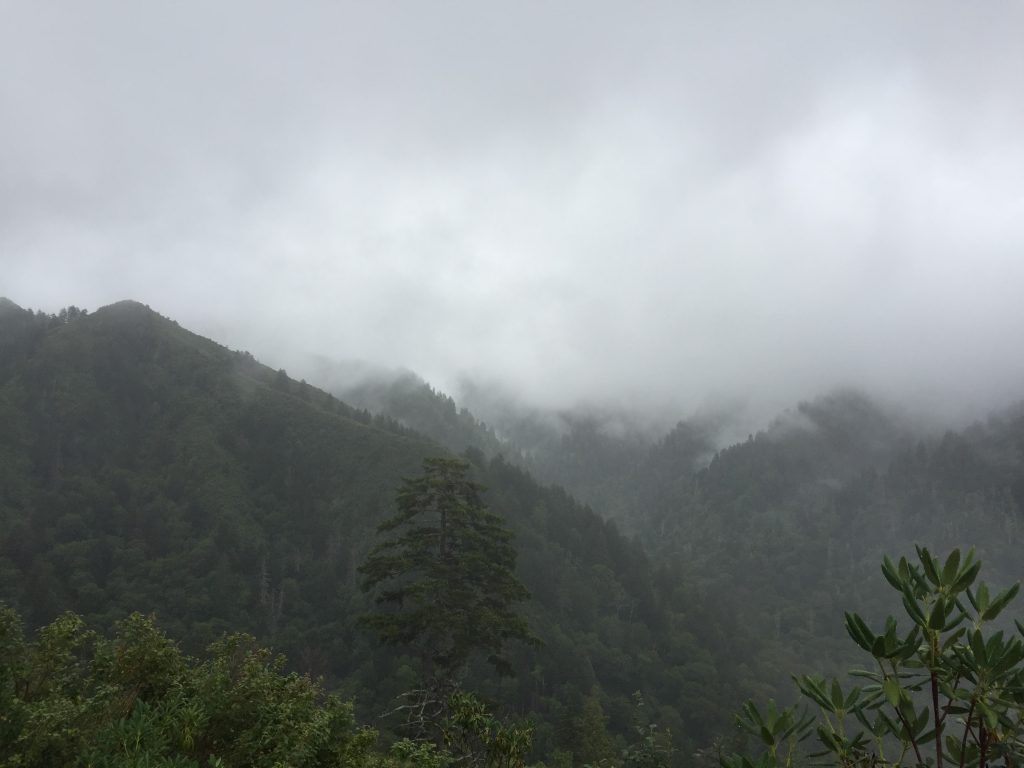
A staple of my childhood time spent at Lake Norman was Snake Island, and the sandbar that led up to it. Snake Island is a small piece of land located a little ways away from the dock attached to the lake house, and as a kid it felt like a completely different world. When we were younger, my cousins and I were so proud when we managed to swim to the sandbar by ourselves, wearing life jackets required by our parents of course. Depending on the rainfall that year, the sandbar was either completely above the water so that we could walk right up to the island, or slightly submerged so that we had to stand on our tiptoes, and sometimes couldn’t reach the bottom. It was- and still is- one of my favorite pastimes to watch people on speedboats, pontoons, and jet skis get stuck in the sand as they try to pass our dock. Even though the island isn’t too big, or even that far away from the shore, going as a kid felt like complete independence.
The island is made up of three separate tiny areas of tree-covered land, with a little bridge between the first and middle sections. If you want to make it to the third section, which is the smallest, you have to leap a small distance over the water, which was especially daunting for an eight year old. On the rare occasions I go back to the island now, the gap seems surprisingly small compared with how I remember it from when I was a child. Though in reality it wasn’t very dangerous, in our minds, the island was filled with copperhead snakes, and we made sure to tread lightly wherever we went. In actuality, the majority of what we saw on Snake Island was littered beer cans and snack wrappers, and perhaps a harmless water snake or two. Nonetheless, Snake Island was an excellent place for an adventure if I was ever in need of a break from adults and the luxurious monotony of vacation.
As I grew older, I began to appreciate this monotony much more. I started to realize that being bored is a privilege, and treated it as such. I spent more time sitting, and less time doing. As a kid I never understood why the adults in my life only seemed to want to lay around and read, or talk to their friends, or tan in the sun. I wanted to run around, swim, explore. But through the years I began to realize that being an “adult” meant constantly running around, so that it was exciting to be able to sit and relax for a while on vacation. I began to have my younger sisters go to Snake Island without me, saying “Maybe later,” whenever they asked me to come with them. It’s not that I’m not active at all anymore while at the lake. I still paddleboard, swim, and take walks with my dog. But in a way, I miss the days where I couldn’t stand to be still for more than a moment, and went to bed thoroughly exhausted from a physically rather than mentally active day.




